Global trends in drug use
The Global Drug Survey becomes more valuable every year; this year more than 130,000 people from ore than 40 countries completed the survey including over 5,000 from the UK.
The survey is very different from research such as the Crime Survey for England and Wales because it is typically completed by regular, mainly recreational, drug users, most of them young and many of them well-educated.
The findings make fascinating reading and provide new data on new drug trends and crucial public health and policy issues. Increasingly, GDS provides a wide range of user-friendly harm reduction tips and resources. I recommend that you find time for a browse.
Let’s face it, where else would you find out that 30% people can get cocaine delivered more quickly than a pizza?
1: Emergency medical treatment
The GDS asks respondents whether they have had to seek emergency medical treatment following consumption of a particular substance. This functions as an excellent proxy indicator for acute harms experienced following the use of alcohol and other drugs. As you can see from the chart below, New Psychoactive Substances present the most risk:
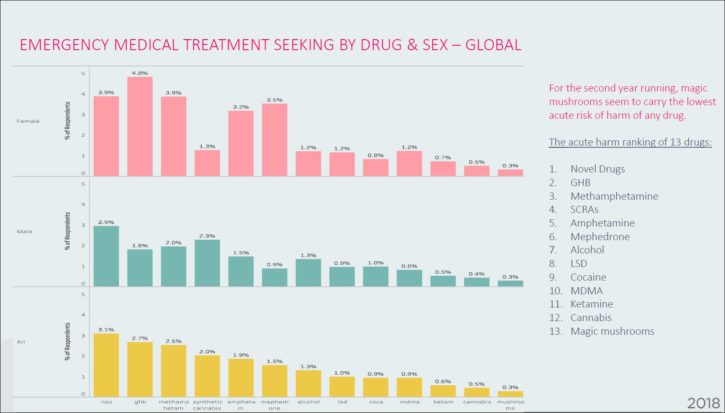
2: Alcohol
GDS 2018 was the biggest study ever undertaken into exploring the potential impact of product labels on people’s awareness of alcohol health harms and the potential for them to influence peoples’ attitudes and drinking behaviour. Public health experts created a range of 7 different health warnings. You can see four of these below: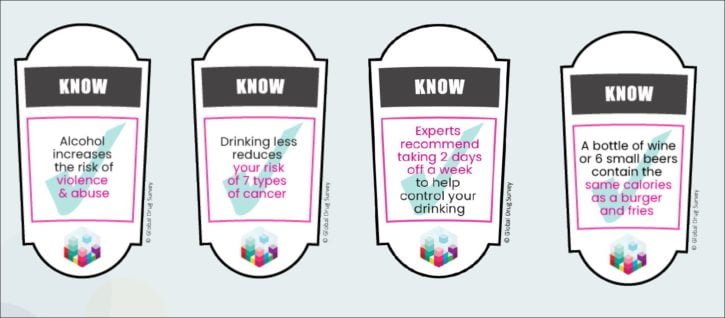
GDS 2018 found that many of these health messages, particularly those about alcohol-related cancer risks, the benefits of having 2 days a week alcohol free and the level of calories in alcohol – were new to large numbers of people and that this form of health label could be an extremely effective and cheap form of health promotion.
3: Cannabis
GDS 2018 found that in the last year there had been a doubling in the percentage of respondents reporting cannabis concentrates as the most common form of the drug used and a 3-fold increase in edible forms of cannabis.
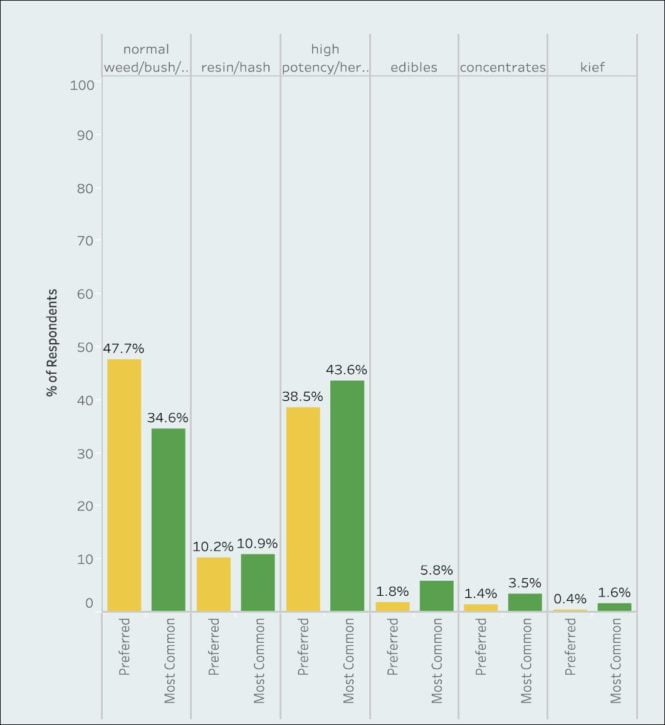
4: Cannabis quitting
One third of GDS2018 survey respondents who had used cannabis in the last year (>50,000 people) reported that they had tried to quite cannabis at least once. The chart below shows people’s motivations for giving up:

There were four standout findings with practical, clinical and public health implications for a drug which is going through the most significant change in its long history of human use.
- Lots of people try to stop using cannabis and those who have tried recently mostly do so without any formal help from healthcare professionals. Although 30% report remaining abstinent six months, this still suggests the need to expand treatment opportunities for people who want to cut down or stop altogether.
- People quit for a variety of reasons with effects on motivation and mood dominating. However, the effects upon personal relationships, physical health and finances are also strong motivators and in many respects reflect the motivation for people wishing to stop using other drugs.
- Withdrawal symptoms are a real challenge for many – especially for individuals with cannabis dependence and those who use tobacco. Assessing and treating concurrent tobacco dependence should be part of the routine management of those with cannabis dependence.
- For a drug that is now being regulated in many countries, more work is required to raise awareness of the risks of dependence and to help people identify problems early and access a range of interventions to help them cut down or stop.
5: MDMA
MDMA remains one of the most popular illegal drugs. Use of MDMA crystals and powder has increased in recent years in many parts of the world. In conjunction with the appearance of high-dose MDMA pills, this has led to changes in consumption habits and the risk profile of users. The low price of MDMA is a clear contributory factor in increased levels of use:
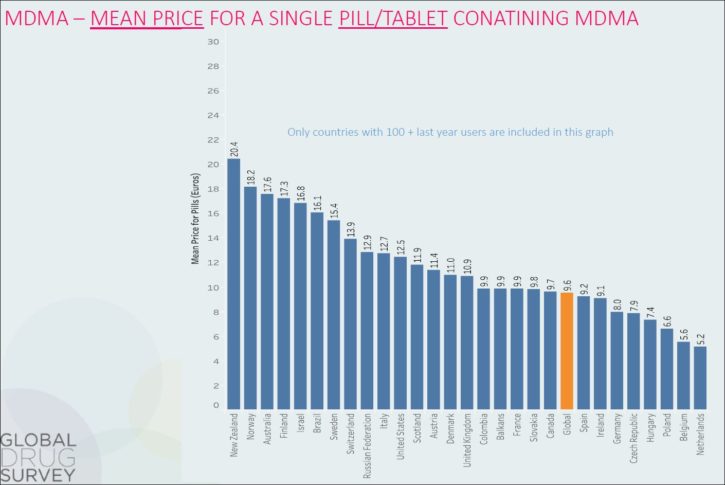
6: Drug checking
5.7% of the GDS2018 participants reported having used a drug checking service or technology to determine the content and/or purity of illegal or unknown psychoactive drugs – over 4500 people completed the specialist section in this year’s survey. The Loop is the UK’s best known drug checking service, operating mainly at festivals. The chart below shows how common drug checking is in different countries and which drugs are typically checked:
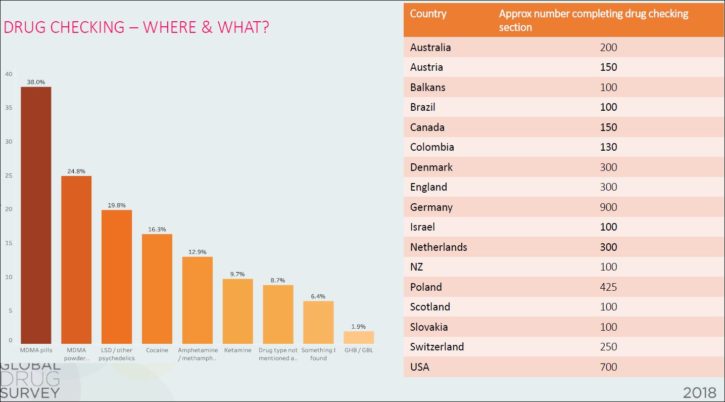
7: Cocaine
Gram for gram, cocaine remains the most expensive commonly used drug in the world. Prices vary widely; from less than €10 per gram in South America to an average of €60-€80 per gram in parts of Europe to €200 per gram in Australia and New Zealand. In recent years, the purity of cocaine in Europe has increased, with 60-70% purity commonly seen in street level deals. This higher purity cocaine can lead to an increase in the risk of acute medical harms as well as probably higher rates of dependence in the community.
At a local level, dealers are competing for customers not only through the quality of their product but also in the convenience and speed of delivery. To explore the workings of sophisticated delivery networks in our major cities GDS2018 asked consumers about access to same-day delivery of cocaine and, where available, ask participants to compare the speed of delivery of cocaine with takeaway pizza:

8: Darknet and cryptomarkets
If anyone doubted the increasing importance of darknet markets for buying drugs, this year’s Global Drug Survey can confirm the trend – 65,000 respondents completed the darknet market section. Use of darknets varies considerably across the world, typically mirroring a combination of access to traditional drugs and the severity of local drug laws. One striking finding was that accessing LSD on the darknet is now the second most common place where people buy that drug. It will be interesting to see whether predicted changes to drug laws in some Scandinavian countries will lead to reduction in the popularity of darknet markets and whether cannabis becomes less popular in people’s shopping trolleys as alternative local and legal sources become available in many places.


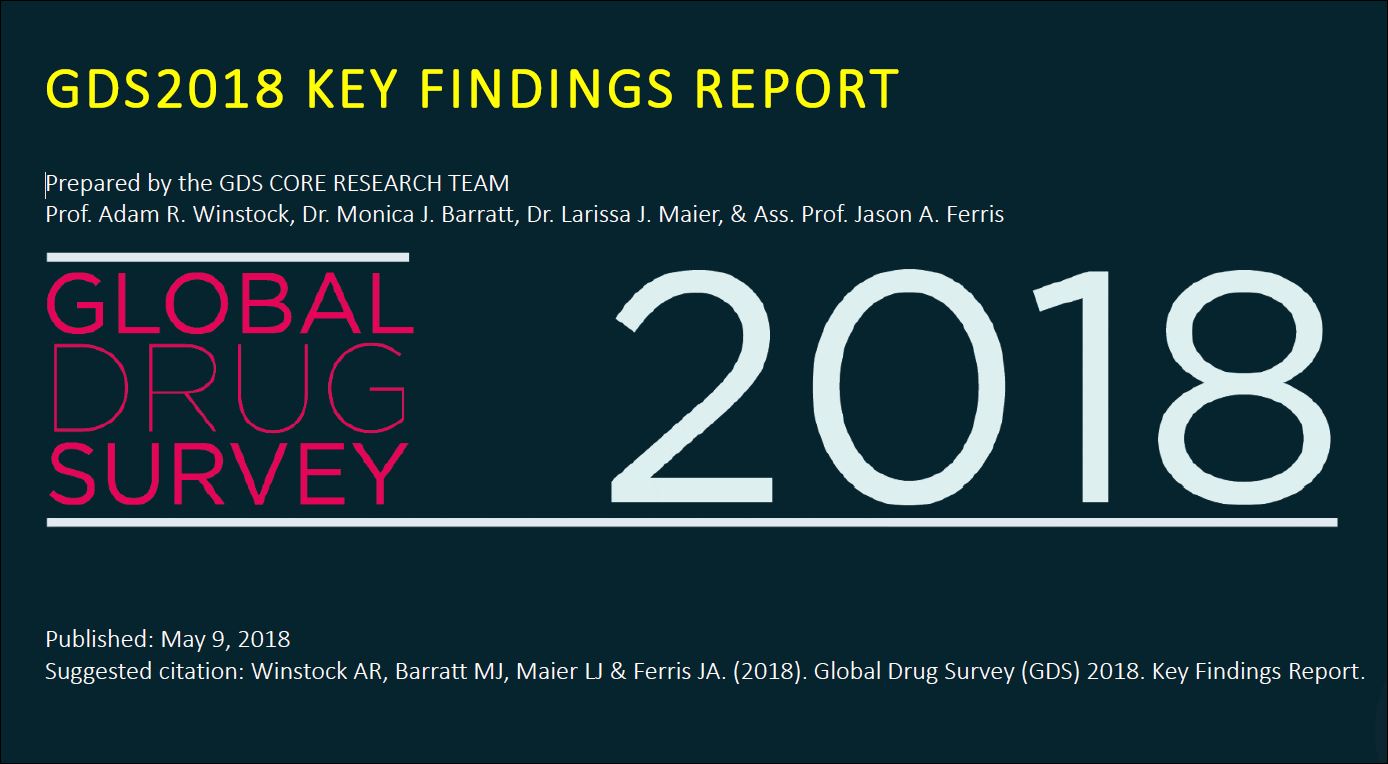






2 Responses
There is interesting stuff here but this is a self-selecting sample of drug users who choose to fill it in. This needs to be the caveat for all of the findings. The emergency presentations is of note here – opiates do not feature but remain the most dangerous drugs in terms of overdose. I suspect regular heroin users have better things to do than fill in GDS and are therfore excluded from the survey. This is not a household / population survey which is limiting for making general points about drug use. It is of interest however for sentinel populations and in the past trends identified in the Mixmag survey (the precursor to GDS) predicted UK recreational drug use trends picked up through other sampling / studies. I worry that the methodology of GDS is not scrutinised in news reports who chase the headlines and triumph the size. Sometimes bigger isn’t always better.
Hi Luther
Thanks for your comment. I absolutely agree ,and GDS always make it clear, that the sample is very different from general population surveys such as CSEW. However, I find the reports invaluable to get a sense of new possible trends and increasingly for identifying harm reduction issues and testing out responses.
All the best
Russell